SUNDAY JOINT, 9-24-2023: LIKE THEY SAY – “WONDER IS THE HEAVIEST ELEMENT ON THE PERIODIC TABLE,” EXCEPT FOR RUSTY MILLER’S SURFBOARD

Hey All,
Count me among those who canceled, without any hand-wringing, the never-jailed but ninth-ring-creep filmmaker Woody Allen. This scene alone should have done it, decades ago—watch and cringe. Yet a half-dozen Woody Allen lines are still hung on the walls, dusty but accessible, in the comedy museum of my mind, like the bit in Annie Hall where Allen, reconnecting with his ex while still being a condescending and superior-voiced little whiny bitch because he gets to write the script so why not, walks into Diane Keaton’s apartment and notices a handbill on her livingroom cabinet. He picks it up.
Hey, what is this? Did you go to a rock concert?
Yeah.
Oh, yeah? Really? How’d you like it? Was it . . . was it heavy? Did it achieve total heaviosity?
Hate myself for laughing, but laugh I do. I can cancel Woody, in other words, but cannot and will not cancel “heaviosity.”
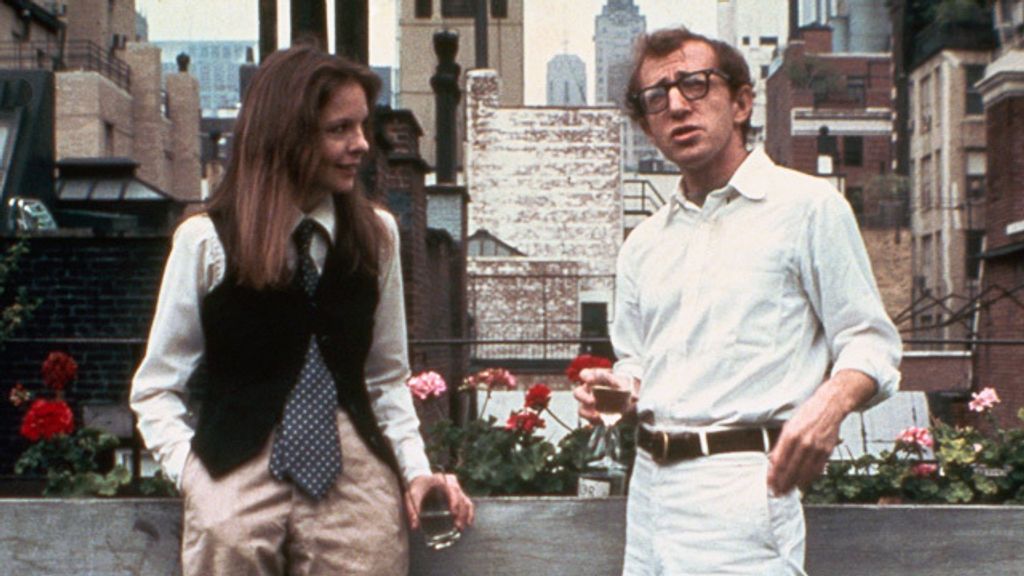
Heavy, in any event, is this week’s featured topic. The cigar-brown board Rusty Miller manhandles on the second wave of this mid-1960s clip is not heavier than chronic dieter and Mom Joke originator Erma Bombeck (“In two decades, I’ve lost a total of 789 pounds; I should be hanging from a charm bracelet!”), but it is without question heavy even by the standard of the day—heavy enough to put a slow-down mojo on one of the best and best-natured surfers to ever come out of San Diego. Miller and I emailed a bit this week. He just turned 80, looks like a cheerful 140-pound piece of shoe leather topped with a still-full and unruly head of hair, continues to give surf lessons at his long-time adopted hometown of Byron Bay, and when the lesson is over he will fast-walk to the top of the point, paddle out, wait his turn, and do this.
Surfboard weight is more or less a settled topic now (lighter is better), but it wasn’t always so. Rusty’s brown-board wave (filmed at Swami’s, probably in 1964) is right at the end of the era I’m thinking about, but for decades our interest in how much boards weighed seemed in to come and go. In some cases, the weight issue was flipped on its head. This quote below, from Midget Farrelly’s This Surfing Life, about how he won the finals of the 1964 World Championships, is without a doubt the strangest first-person account of a surfer on their way to a title that you’ll ever read. Keep in mind that second-runner-up Joey Cabell, generally thought to be the most advanced and in-form rider at the event, was six inches taller than Midget and probably 40 pounds heavier.
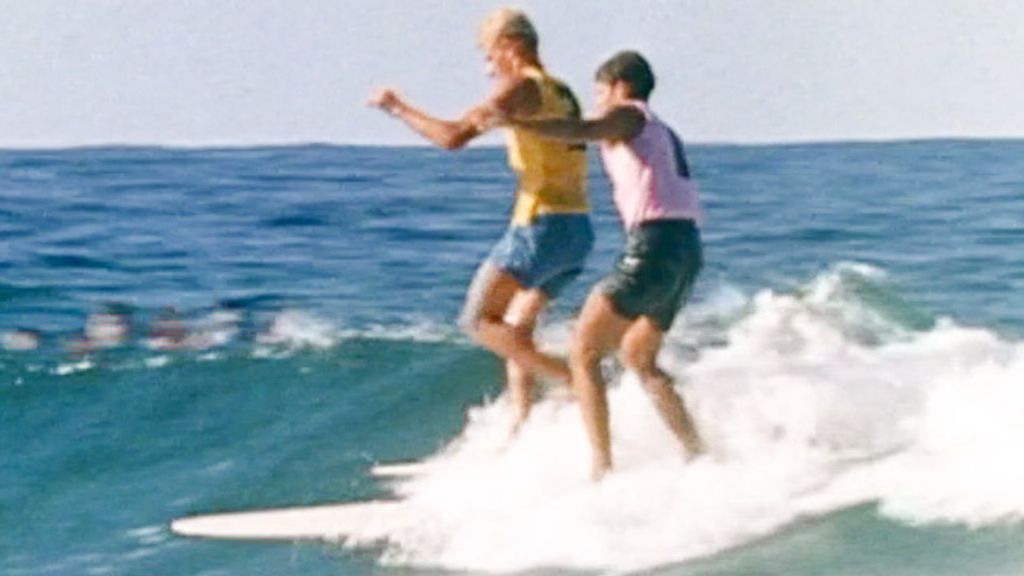
The surf was down to about four feet and not so well shaped. Right from the start I did not like it. I felt rotten, and I did not want to be in it. I just felt so sick of it all. I did not feel as though I could be aggressive, and it showed in my riding: I more or less took it easy and was probably a little lazy. Bobby Brown and Mick Dooley rode very well and so did Joey Cabell and Mike Doyle. Cabell was very aggressive, making very few mistakes other than jamming rides for other surfers. He was consistently on and off the nose of his board. The difference between Cabell and me was in our boards—mine was ten pounds heavier than his and three inches longer.
Well, when it was all over we waited for the result. The tension on the beach was terrific. When my name was announced as the winner I nearly fell through the sand. How could I be placed so high when I felt as though I hadn’t done my best? They say that the last wave I rode won it for me, but I feel that I have ridden six hundred better.
We could bang out a month’s worth of Joints parsing this quote sentence by sentence, but my eyebrows always shoot up at the fact that Midget’s board was ten pounds heavier than Cabell’s. Just a guess, but Farrelly’s board probably weighed in the low 30s, meaning Cabell’s board was in the low 20s, and let’s stop here to consider that if two-time world champ Filipe Toledo duct-taped all six of his Trestles boards together the resulting mass would still weigh less than Farrelly’s ’64 beast. Two years later Midget came out with his Stringerless model, going hard in the other direction, weight-wise, along with the rest of the surfing world, and light has been the rule ever since.
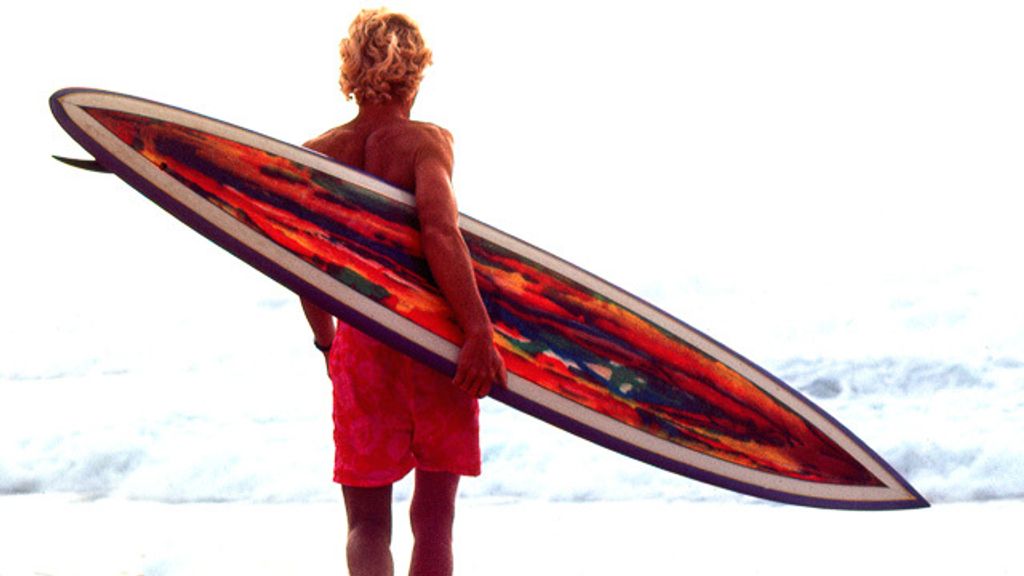
But let’s go back a little further, to Malibu, 1950. Similar deal. Surfboard weight wasn’t a non-issue, exactly, but after hotshot surfer-shapers Joe Quigg and Matt Kivlin made extra-light boards (25 pounds, give or take) for a group of Santa Monica post-bobby-soxers hanging around First Point, the Malibu dudes gave the “girl boards” a try and after just a few waves realized this was the way to go, which puts us one short step away from Dewey Weber, the Romulus of high-performance surfing, and then you just fold the time-space continuum a couple of times and circle back gender-wise and here we are at Caitlin Simmers, whose boards can only be weighed using a mass spectrometer.
We’re running out of room here, so bring it home, Erma Bombeck: “The only reason I would take up jogging is so that I could hear heavy breathing again.”
Thanks, everybody, and see you next week.
Matt
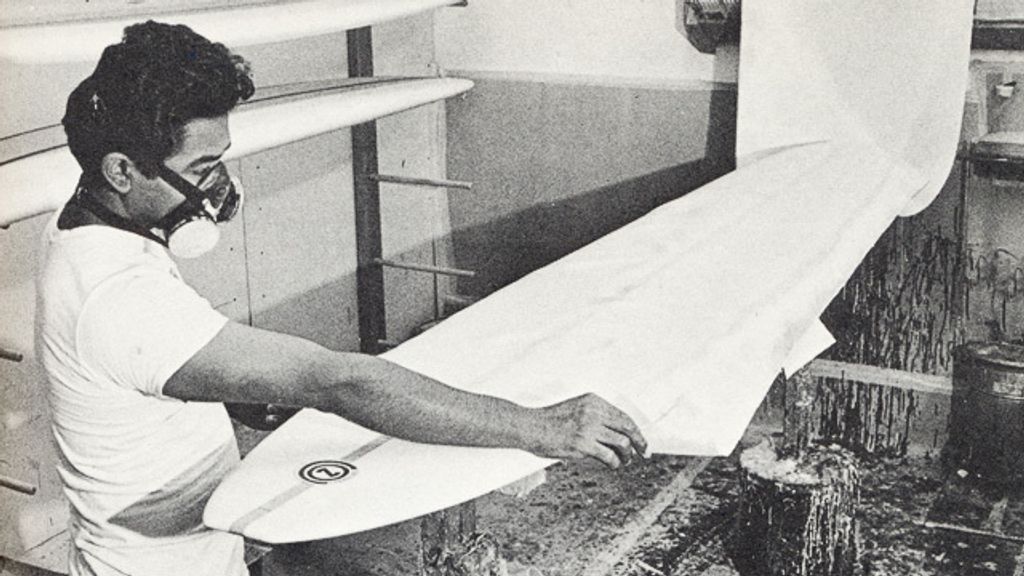
PS: I brought this up in a Joint from two years ago, but in 1964, according to Surf Guide magazine’s “Annual Buyer’s Guide,” the custom-board shopper could pretty much go as heavy as they liked, all the way up to a double 20-ounce cloth option by Flaherty Surfboards in Canoga Park—and to get that tank from the parking lot to the beach you’re going to want to set aside enough for a 12-lesson Charles Atlas Dynamic Tension program, and a steady supply of beefsteak and raw eggs.
PS: Lots of comments about the unnamed dark-haired man walking with Kathy Kohner, as seen in last week’s Joint, and presented again, below. Dora or no? As with all things Miki, opinion very much divided.
David Rensin, author of the Miki Dora biography All for a Few Perfect Waves: “Not Dora. I don’t think he’d be caught dead in those shorts.”
Jim Lucas, Santa Cruz: “Yep, that’s Dora. Went out in his Bermudas hence the cuffs. Dora never was one to wear the ’surfer’ look.”
Vicki Flaxman, one of the “girl board” high schoolers described above: “I don’t think it’s him. Miki would have loved to have those calves.”
I’m with Vicki, on this matter and pretty much everything else.
Finally, somebody out there also commented on how incredibly sleek and narrow and modern-looking the board is tucked under that fella’s arm, whoever he is, especially compared to the Studebaker Kathy’s barely holding on to. This topic is also Joint-worthy—the fact that boards in the 1950s had a lot more template variation than those that followed in the early- and mid-’60s. All the pics below were taken in the ’50s.
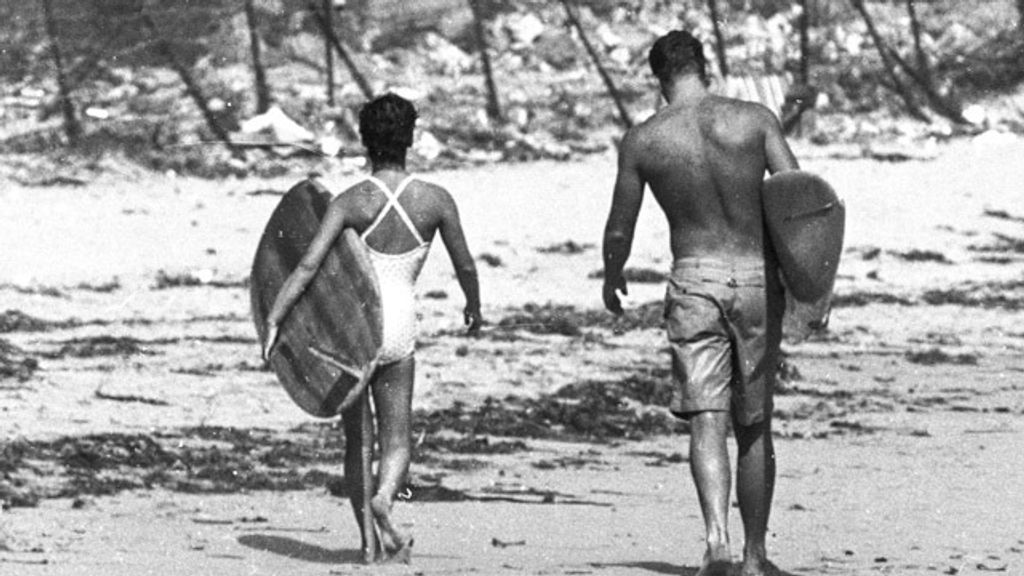
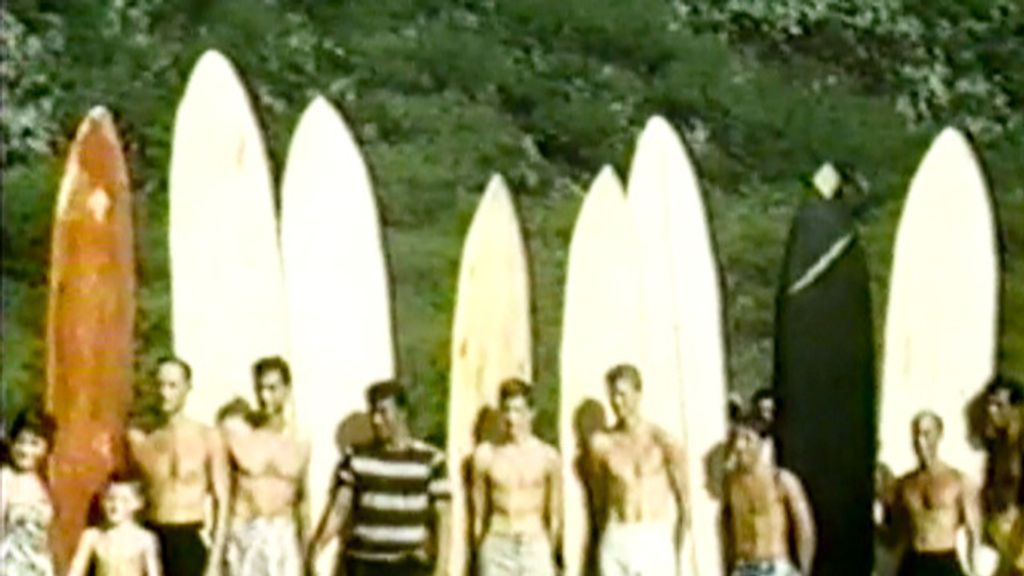
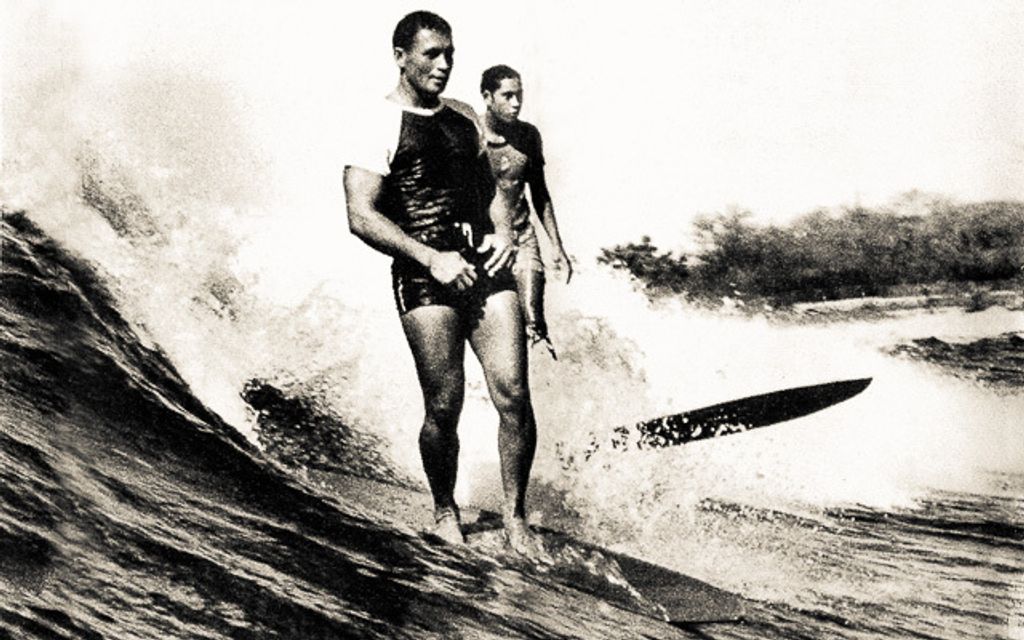
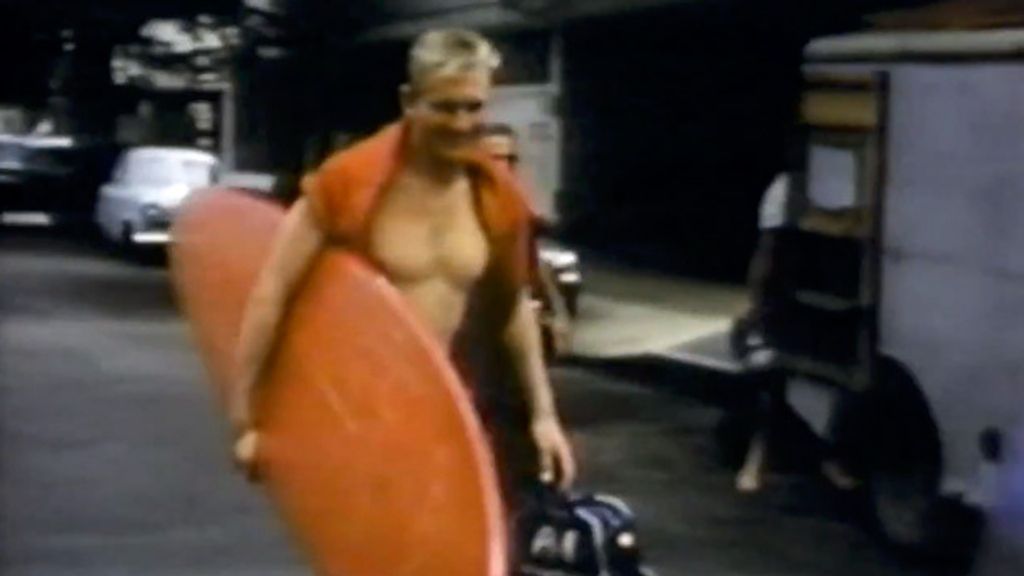
[Photo grid, clockwise from top left: Caitlin Simmers, 2023; Rusty Miller, 1965; Erma Bombeck; Buzzy Trent, around 1957; “Mac” and his new muscles, from the classic Charles Atlas Dynamic Tension ad; Midget Farrelly rides his Stringerless model, 1966. Diane Keaton and Woody Allen in Annie Hall. Midget and Joey Cabell in the 1964 World Championships final. Midget in Hawaii, 1969, photo by Alby Falzon. Glasser at the Con Surfboards factory, around 1966. Kathy Kohner and probably-not-Miki-Dora at Malibu,1958. Surfers lined up at Makaha, around 1955. Rabbit Kekai on a hot curl, around 1955, photo Clarence Maki. American surfer in Sydney, 1956.]